Mt. Fuji (3,776 +)
MT. FUJI (3,776 +)
Central Japan
Major jumpoff: Kawaguchiko Go-gome (富士五合目)
LLA: 35°21′28.8″N 138°43′51.6″E, 3776 MASL (highest in Japan)
Days required / Hours to summit: 1-2 days / 5-7 hours
Specs: Major climb, Difficulty 5/9, Trail class 1-3
Features: night trek, cultural trek, snow, sea of clouds
*Features are tag words that help describe the mountain, in addition to ‘Specs’. A complete list of ‘features’ plus their definitions will soon be posted in PinoyMountaineer.
BACKGROUND
The world famous Mt. Fuji or Fuji-san is the symbol of the Japanese people and the highest, most spectacular mountain in Japan. Rising uninterruptedly from Shizuoka and Yamanashi prefectures in the central Japanese island of Honshu, Fuji exhibited a lot of volcanic activity which has led to its transformation into a graceful, near-perfect mountain. Its conical shape draws parallel’s with the Philippines’ Mt. Mayon, also a volcano, and and although the latter has the ‘more perfect cone’, the snowcapped appearance of Mt. Fuji elevates its grandeur and securing its place not only in Japan but throughout the world.
Indeed, over 200,000 people make the trek yearly, during the climbing season that lasts from July-August. Although this immense number of people leaves no room for tranquility, climbing with people from different nations is in itself a unique experience. The climb has been around for hundreds of years, and the Japanese have a saying, “You are wise to climb Fuji-san once, but a fool if you climb it twice.” Negatively, one may see in this adage the redundancy and futlity of another Fuji climb, having to go through all that. But positively, it asserts the importance of Fuji as a once-in-a-lifetime experience.
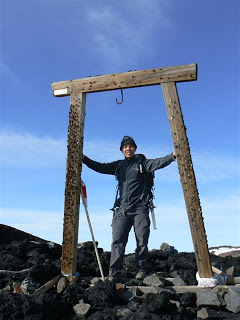 There are at least four different trails to the summit of Mt. Fuji, namely the Yoshidaguchi, Gotemba, Subashiri, and the Fujinomiya trials. The most commonly used is the Yoshidaguchi trail, which starts off at the Kawaguchiko Go-gome (5th station). Of course, you can start from the 1st station which begins from a shrine, but it will be more arduous. From the 5th station, one can either spend the night on the mountain huts, or arrive late night and do some night trekking. Many veterans recommend the latter option: spending a few hours on a mountain hut with poor facilities and expensive costs is not such a good idea.
There are at least four different trails to the summit of Mt. Fuji, namely the Yoshidaguchi, Gotemba, Subashiri, and the Fujinomiya trials. The most commonly used is the Yoshidaguchi trail, which starts off at the Kawaguchiko Go-gome (5th station). Of course, you can start from the 1st station which begins from a shrine, but it will be more arduous. From the 5th station, one can either spend the night on the mountain huts, or arrive late night and do some night trekking. Many veterans recommend the latter option: spending a few hours on a mountain hut with poor facilities and expensive costs is not such a good idea.
The trail is very well established; an entire fleet of tractors maintain the patency and safety of the trails vs. erosion and snowslides. It is also well-marked; it is virtually impossible to get lost while climbing Fuji especially with the people and the stations where you can ask for directions. At first wide and even, the trails become steep, and there are some parts of the trail where you may have to use your hands for balance. But generally the slope is 20-30 degrees; it seldom reaches over 45 degrees. All the way to the top, the trail is virtually entirely made up of rock, gravel, and sand – a testament to Fuji’s past volcanism. Only if you climbed Fuji from first station will you realize that Fuji is not entirely barren; its base is decked with a beautiful pine forest.
ITINERARY
(From Tokyo)
Day 1
1950 ETD Chuo Highway Bus from Shinjuku
2220 ETA Kawaguhiko Go-gome (富士五合目); prepare for climb
2240 Start trek
2320 ETA Roku-gome (6th station)
Day 2
0000 Arrival at 7th station
0130 Arrival at 8th station
0230 Arrival at 8.5th station
0400 ETA Mt. Fuji summit
0430 Goraiko
0600 Start descent
0930 Back at Go-gome
1100 Take return bus to Shinjuku
SPECIAL CONCERNS
Climbing season. Mt. Fuji’s climbing season starts on July 1 and ends in August 27. Within this period, it is summer and the temperatures are relatively manageable (Pulag-like). Still, it can drop to near-zero levels. And paradoxically, as soon as the sun rises, since there is no forest cover, descending by Mt. Fuji can be very hot. It is often asked whether it is possible to climb Fuji off-season. The answer is yes. Especially in the weeks surrounding the climbing season. Take note, however, the extra precautions must be applied if climbing off-season; trails may still be snowy and temperatures lower. Consult and inform local authorities if you are climbing off-season.
Budget. As will be asserted on a separate blog entry that will tackle hiking in Japan in general, mountain climbing in Japan is a very economic way of travel. The entire Fuji trip, for instance, can cost as low as JPY5200 from Shinjuku – i.e., only transportation would be expended. Trail food could be three or four bean buns / onigiri, and you can totally avoid purchasing food in the mountain to save up. Of course, you may want to avail of the climbing stick plus stamps which will cost around 2,500 in all. Hence, even with a nice celebratory meal after, plus some souvenirs, a Mt. Fuji climb following the above itinerary will not go beyond JPY10,000.
Logistics. Aside from the convenient Chuo (Keio) highway bus, there are other bus/train services to Fuji, not to mention tour operators that offer Fuji for JPY12,000-15,000 including the mountain hut stay. If you have a car, you can drive all the way to the 5th station. As mentioned earlier, the trails are very established, and guides are in most cases unnecessary. What is very necessary in Fuji is checking the weather. Snow Forecast does an excellent job for monitoring Fuji conditions.
Health and safety. Although in general, altitude sickness may occur in settings higher than 4000m, Mt. Fuji is high enough for the possibility of mild altitude sickness. Symptoms includes headache, shortness of breath, irritability, dizziness, among others. See the Wikipedia article on altitude sickness for more information on this condition. Oxygen cans are available throughout Japan (Sanso in Nihongo) but they are hardly needed for Mt. Fuji despite popular belief.
Sidetrips. The Fuji-Izu-Hakone area, from summit to sea, is actually a national park and it has many attractions including the scenic coast of Izu, the onsen (hot spring baths) of Hakone, and the Five Lakes that surround Mt. Fuji. A Fuji climb Friday-Saturday morning may be a great start for a weekend in this region. There is a Hakone Free Pass offered by Odakyu Lines to help maximize your stay in the area.
TRIVIA
Mt. Fuji was first climbed in 663 AD by an anonymous monk. Since then it has been considered sacred by the Japanese. Interestingly, women were forbidden to climb Mt. Fuji until 1868!
The mountain is classified as a dormant volcano which last erupted in 1707. Actually, it is considered to be a merger of three volcanoes: Kom
Mt. Fuji is the northernmost border of the Philippine plate where it meets the Eurasian and Okhotsk plates.

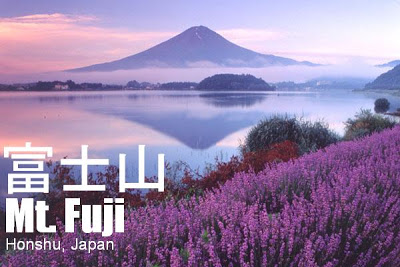

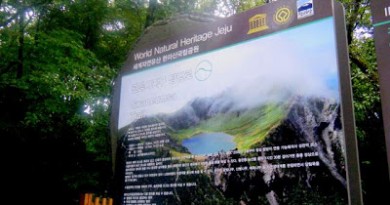
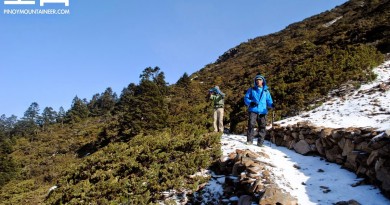
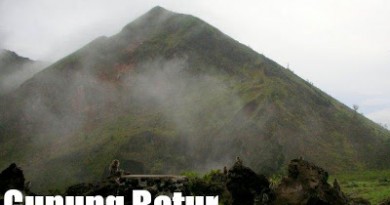
Leave a Reply
7 Comments on "Mt. Fuji (3,776 +)"
Hi Sir Gid,
I'm planning to climb Mt. Fuji this July. Do you have contacts who can arrange the trip? As for the budget, how much will it cost in peso?
sir same here,im planning to climb this july. may contact number ka ba?
@ sir gid
sir kelangan ba ng visit visa sa japan?
Hi Sir Gid,
I'm planning to climb Mt. Fuji this July. Do you have contacts who can arrange the trip? As for the budget, how much will it cost in peso?
yan ang na miss ko sa japan, entry about mt fuji. tama ka may climing season ang mt fuji, been to japan eh winter kaya hanggang wide view from afar lang ako, hehe. hopefully soon marating ko rin yan.
hi! sayang di ako nakaabot grrr… try ko next year. binigyan na ako ng contacts ng kaopisina ko pero ibang trail nga lang 🙂